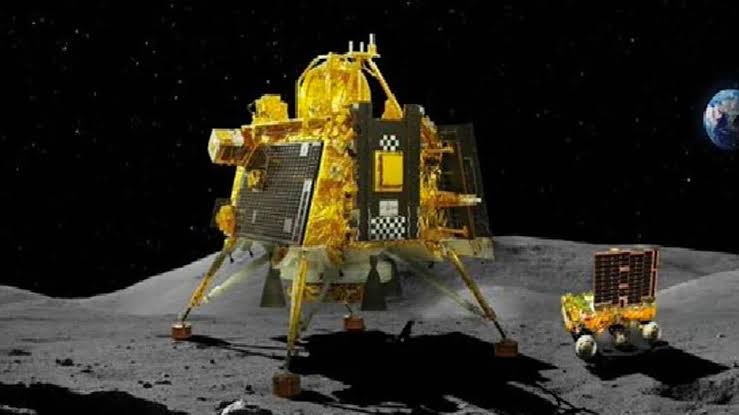Chandrayaan-4 to bring Chandrama’s samples

Chandrayaan-4 to be launched in 2028, represents a major leap forward for India’s lunar exploration capabilities, with its innovative mission design and ambitious scientific goals. It is going to be an ambitious lunar sample return mission planned by the Indian Space Research Organisation (ISRO). This mission aims to collect samples from the Chandrama’s surface and bring them back to Prithvi for scientific analysis, marking a significant advancement in India’s space exploration efforts.
The mission will employ a dual-phase launch strategy, utilizing multiple spacecraft modules. This innovative approach involves launching the modules separately and assembling them in space, which is a first for ISRO.
Chandrayaan-4 is designed to be a complex lunar sample return mission involving five distinct modules, each playing a critical role in the mission’s success. The mission will unfold in several detailed stages:
First phase will be the Lunar Orbit Insertion: The spacecraft will first enter lunar orbit. Once in the desired orbit around Chandram, it will prepare for the deployment of two specialized modules.
The next phase will be detachment of lander modules from the main spacecraft and perform a controlled descent to the Moon’s surface. These modules are tasked with collaborative efforts to collect lunar soil and rock samples. Precision landing and deployment will be crucial at this stage.
In the third phase after landing, two modules will commence sample collection. One module will be equipped to launch back from the Chandrama’s surface with the collected samples. This ascent module will return to the main spacecraft in lunar orbit.
In the fourth the ascent module’s return to the main spacecraft will involve precise docking manoeuvres. ISRO will perform docking twice during the mission—first when the ascent module reattaches to the main spacecraft and again when transferring samples to a specially designed Prithvi re-entry vehicle.
Re-Entry And Sample Return: The Prithvi re-entry vehicle, launched separately from Prithvi, will dock with the main spacecraft to receive the lunar samples. After the transfer, the re-entry vehicle will detach and head back to Prithvi, where it will be responsible for delivering the samples for detailed analysis.
The Chandrayaan-4 mission presents several technological hurdles, notably the docking operations in lunar orbit. Aligning two spacecraft moving at high speeds and ensuring precise docking requires advanced navigation, control, and sensor technologies.
ISRO has not previously conducted docking operations in lunar orbit. This mission will showcase this capability for the first time, with preliminary demonstrations planned for the SpadeX mission later this year.
The designs for Chandrayaan-4 have been finalized, and the project is now awaiting final government approval. This mission represents a significant milestone for ISRO, underscoring India’s growing expertise in space technologies and mission planning.
The primary objective of Chandrayaan-4 is to return lunar soil and rock samples to Prithvi. The mission will focus on collecting samples from the Chandrama’s surface, particularly from unexplored regions, which could provide valuable insights into the Chandrama’s geology and history.
The rover will explore a larger area compared to previous missions, measuring 1000m x 1000m, enhancing the potential for significant discoveries.
ISRO is collaborating with the Japanese space agency JAXA on another lunar mission, LuPEX, which aims to explore the Chandrama’s darker regions.
The success of Chandrayaan-4 will depend on its ability to execute complex manoeuvres, including docking in space and safely returning samples to Pruthvi.




